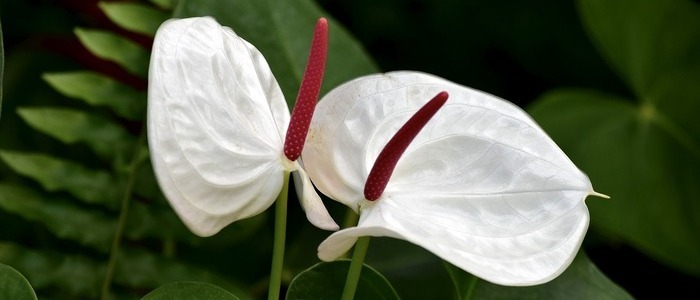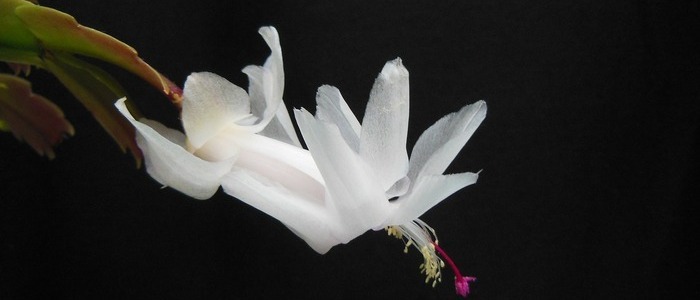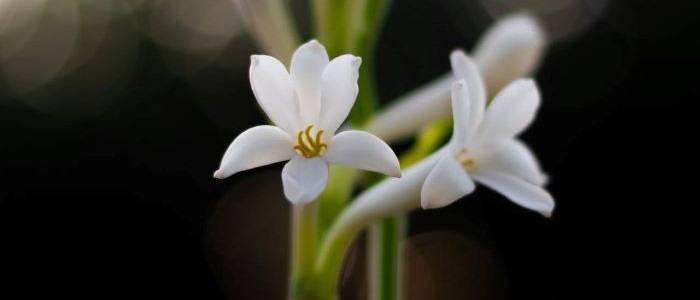The regular oxalis plant is a wonderful indoor plant that is easy to care for and looks great in any home. It can bring life and color to any room, making it the perfect addition to your indoor garden. Growing regular oxalis requires some knowledge and effort, but with a few tips and tricks you’ll be able to successfully maintain this beautiful plant.
In this article, we’ll provide an overview of how to grow regular oxalis as a houseplant, from choosing the right plant to common problems you might encounter. Learn about preparing the soil for planting, watering and feeding the plant, potting and repotting it, pruning and caring for it, as well as potential problems you may run into along the way. With this guide in hand, you’ll be able to make sure that your regular oxalis stays healthy and vibrant all year round!

Oxalis Plant Frequently Asked Questions
Is there a difference between the regular oxalis and the purple shamrock plant?
Yes, there is a notable difference between the regular oxalis and the purple shamrock plant. While both belong to the same genus and share similar characteristics, the main distinction lies in their coloration. The regular oxalis typically displays green leaves, whereas the purple shamrock plant features vibrant purple or maroon foliage, adding a stunning touch of color to any garden or indoor space.
Is regular oxalis a house plant?
Yes, regular oxalis is indeed a popular house plant. Its vibrant green foliage and delicate white or pink flowers make it an attractive addition to any indoor space. With proper care, regular oxalis can thrive indoors, bringing a touch of nature and beauty to your home all year round.
Choosing the Right Oxalis Plant
Choosing the perfect regular oxalis plant for your home is essential for successful growth. To select the best variety, you must consider the climate and light availability in your area, as well as research which varieties of oxalis grow best there. It’s also important to choose a variety that isn’t considered an invasive weed in some areas. When you go to purchase your regular oxalis plant, inspect the foliage for signs of disease or pest damage and check for vigor by looking for healthy, lush leaves with a vibrant color.
Also take a look at the roots of the plant and make sure they are nice and plump. This will ensure that you get a strong, healthy regular oxalis plant that can thrive in your home. Once you have selected the right variety of regular oxalis, you need to prepare it correctly for planting. The soil needs to be loose enough so that water can penetrate yet dense enough so that it will not become soggy or compacted from over-watering.
Adding organic matter such as compost or aged manure will help provide nutrients to the soil while increasing its water retention capabilities. Make sure to use a pot with good drainage and be aware of how much sunlight exposure it gets throughout the day – this will vary depending on where you live but most regular oxalis plants prefer partial shade or filtered sun exposure during their growing season.
Finally, make sure to choose an appropriate sized pot – if it’s too big then there is a risk that the soil could become oversaturated with water due to poor drainage; if it’s too small then there won’t be enough room for root growth which may stunt its growth over time. With these tips in mind, choosing and preparing your regular oxalis should be easy!
Preparing the Soil for Planting Your Oxalis Plant
When looking to cultivate a thriving houseplant, preparation of the soil is paramount. For regular oxalis, selecting the right kind of soil for planting is essential in ensuring successful growth. A loamy texture with an optimal pH balance is ideal; this will provide your plant with adequate nutrients and aeration for its roots to develop.
Additionally, it’s important to select a well-draining potting mix to avoid waterlogging and root rot – organic matter such as compost or peat moss can be added for further drainage benefits.
Before planting your regular oxalis, it’s important that the soil is adequately moistened. Add enough water slowly until it saturates throughout the potting mix depth and leave for 15 minutes before beginning planting. It may also be beneficial to add slow-release fertilizer sparingly according to manufacturer instructions – this will provide additional nutrients but should not be overused!
When caring for regular oxalis plants, their environment must also be taken into account – too much direct sunlight can damage their foliage so it’s best placed in an area where there is plenty of indirect daylight instead. Rotating them occasionally will ensure even amounts of light hit all sides of their leaves. With these tips in mind, you are now well prepared to create a healthy home environment for your regular oxalis houseplant!
Watering and Feeding Your Oxalis Plant
Taking care of your regular oxalis is essential for its health and vibrancy. Watering and feeding are two key elements to maintain lush foliage, vibrant blooms, and encourage growth. Once a week, water deeply so the soil is completely saturated. When it comes to fertilizing, use a weak solution every two weeks during spring and summer months.
Be careful not to overfeed as too much can cause leggy foliage or fewer blooms. Additionally, adding a small amount of vinegar to the water will balance out the pH levels for optimal growth while occasional flushing with plain water helps remove any salt buildup from fertilizer that could damage roots.
By following these simple tips, you’ll be able to grow an attractive houseplant that adds beauty to your home! With regular watering and feeding as well as other proper care practices such as repotting when necessary, you can enjoy this lovely plant year-round!
Potting and Repotting the Oxalis Plant
Growing a regular oxalis houseplant is an enjoyable gardening experience, but it’s important to keep a few care tips in mind. First, choose a wide, shallow pot with drainage holes to provide the plant with proper soil drainage and avoid oversaturation. Plant one or two bulbs per pot and water them thoroughly until the soil around them has settled.
Throughout spring and summer months, fertilize every few weeks with a balanced fertilizer solution or compost tea to ensure optimal growth and health of your plant. It is also recommended that you repot your oxalis every two years to give the plant enough room to grow stronger roots. Make sure when you do this to use fresh potting mix and don’t overpack the soil as this can cause root rot or damage roots.
Pruning any dead leaves or stems on a regular basis will also benefit your oxalis by allowing more nutrients from the soil reach leaf tips more efficiently. Additionally, rotate your pot occasionally so that all parts of the oxalis receive even light exposure which helps promote lush foliage growth around stem nodes and vibrant blooms throughout the year.
By following these simple steps regularly, you can create an environment for your regular oxalis houseplant where it can thrive! Keep in mind that the key is not overwatering – make sure to keep its soil lightly moist at all times but not overly saturated – while providing adequate sunlight exposure for optimal growth conditions. With some patience and dedication, readers should be able enjoy their healthy plants for many years!
Pruning and Caring for your Oxalis Plant
.Caring for a regular oxalis plant is key to keeping it healthy and attractive. Pruning should primarily be done in late winter or early spring – this helps remove dead leaves, encourages new growth, and keeps the shape of the plant looking nice. When pruning, make sure you don’t go overboard as too much can harm the plant.
Additionally, fertilize with a balanced liquid fertilizer (10-10-10) during spring and summer months at half the recommended dosage to prevent any potential damage from over-fertilizing. When watering your regular oxalis houseplant, keep the soil moist but not wet and provide adequate drainage so that no root rot occurs.
Also ensure that there’s plenty of light and airflow around the plant to prevent diseases and pests from settling in – steer clear of direct sunlight on hot days! Make sure to check for signs of infection regularly too such as discolored leaves due to powdery mildew. With proper care, you will have a beautiful regular oxalis houseplant for years!
Common Problems with Regular Oxalis Plant
Growing regular oxalis as a houseplant can come with its own set of challenges. One of the most common problems is pest infestations, which can range from mealy bugs and aphids to mites. These pests are particularly drawn to plants that are already under stress, so it’s important to keep your plant well-watered and fed in order to prevent or reduce any infestation.
Stress can also be caused by incorrect watering or nutrient levels, so it’s important to research the specific needs of your particular species before planting them. Pruning should also be done regularly for size control or to remove dead or damaged leaves. Over-watering can cause root rot, while yellowing leaves may indicate a lack of sunlight – both of which could lead to stunted growth and other issues if not addressed quickly.
Fortunately, all these issues are easily preventable with the right information and techniques. Proper watering schedules and fertilization regimes should be followed depending on the species you have chosen for your home, while ensuring that they are getting enough light is key for healthy growth. Additionally, keeping an eye out for signs of infection such as discoloration in foliage or stems and checking for pests regularly will help ensure that your plant stays healthy over time.
Conclusion
Regular oxalis is an ideal plant for a home environment due to its small size and vibrant foliage. To ensure that it thrives in your home, we recommend doing research into the particular species you are growing, so you can understand its needs in regards to environment and care.
It is important to select a pot with good drainage capabilities, prepare the soil with organic matter for better moisture retention and nutrient absorption, water deeply once a week.
Avoid overwatering, provide adequate light and airflow for optimal growth conditions, fertilize every two weeks during spring and summer months using a weak fertilizer solution, rotate the pot occasionally, prune dead leaves regularly, check for signs of pests or infection often, and flush the soil with plain water occasionally to remove salt buildup from fertilizer.
We also suggest experimenting with different growing techniques such as soil types or fertilizer mixes in order to find what works best for your particular species of oxalis. Additionally, readers should take into account their local climate when choosing which species of oxalis to grow as some varieties do better in certain climates than others. Finally, there are many resources available online if readers need more information on growing regular oxalis plants in their homes.
By following these tips and advice on how to grow regular oxalis as a houseplant, readers can successfully maintain lush foliage and vibrant blooms throughout the year. Taking into account their local climate and researching different species of regular oxalis will help them create an ideal home environment for their plants that will last for years!
Other White House Plants











